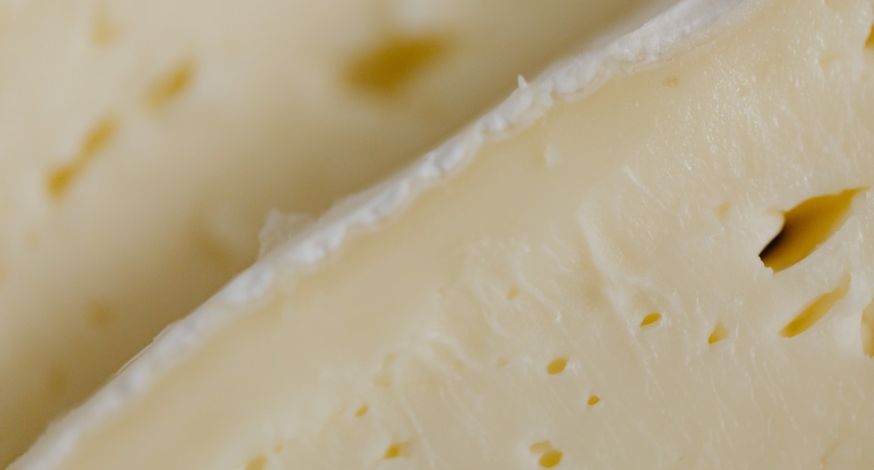Previous Post

4 Tips For Surviving Your First Trip Alone

People like cheese, right? We like to eat it as an appetiser, as a side dish with pasta or potatoes, or as a snack that goes well with wine. Even though everyone likes cheese, not many people know how it's made. We've busted some myths about making cheese. We'll discuss cheese-making ingredients and steps. When you eat cheese next, think about how much time and work went into making it.
To make cheese, follow the steps below.
To make good cheese, you need good milk. "Just right" means something different for each cheese, so many cheese makers standardise their milk. Changing the amount of protein to fat might help. Most of the time, pasteurisation or mild heat is used. Heating the milk kills organisms that could make the cheese go bad and helps the starter cultures grow. Once the milk has been pasteurised, it is cooled to 90°F and starter cultures are added. Raw milk needs to be heated to 90°F before starter cultures can be added.
Add starter cultures to the milk to make it more acidic. If milk sits out for long enough, it will turn sour on its own. A lot of bacteria can turn milk sour. Instead of letting the milk go sour on its own, this step is now done the same way every time when making cheese. With starter cultures and other cultures, cheesemakers make the milk sour. At this point, the milk should be 90°F and should stay there for 30 minutes to ripen. During ripening, the pH of the milk drops, and cheese gets its flavour.
Cheesemakers must start changing how the liquid milk feels. Milk can turn sour on its own. Rennin is made in the stomachs of calves, piglets, and kittens to help them digest their mother's milk. Cheesemakers are in charge of this. Before, cheesemakers used natural renin to make cheese, but now they use rennet made in a lab. Rennet converts kappa casein to para-kappa-casein. Because of this reaction, milk turns into curds. When curd hardens, whey is made.
Let the curds and whey sit out until the pH is 6.4. The curd should have stuck together in the cheese-making vat. Long curd knives are used to cut through the curds. Cutting the curd makes it have more surface area, which makes it easier for it to separate. The curd is cut vertically, horizontally, and diagonally by the people who make cheese. How much water is in cheese depends on how big the cut curds are. Larger curd chunks hold more water, which makes the cheese moister, while smaller chunks make the cheese drier.
The cut curd goes through more steps. It may be necessary to cook, stir, or do both. Through all of these steps, curds and whey are separated. As curds are processed, they become more acidic and give off water. More cooking and stirring make the cheese drier. Another option is to wash the curd. When you wash curd, you get rid of the whey. This changes the taste and feel. Cheeses made from washed curd are stretchy and have a mild flavour. Wash-curd cheeses include Gouda, Havarti, and Swedish Fontina.
Take the whey out now that the curds and whey are separate. This means getting the whey out of the vat so that only the curd is left. These chunks could be big or small, depending on how finely the curd was cut. After the whey is drained, the curd should look like a mat. There are many ways to drain whey. Sometimes, cheesemakers let it drain on its own. For harder cheeses that need less water, cheesemakers often use a mould or press. When you press curd, more whey comes out.
After the whey is drained, the curd should form a large slab. Some cheeses need more whey taken out. We call that "cheddaring." After cutting the curd mat into pieces, cheesemakers stack the curd slabs. Stacking slabs squeeze out moisture. Cheesemakers cut and stack slabs of curd from time to time. As the process goes on, more whey is taken away from the curd. This makes the cheese denser and more crumbly. Fermentation is a part of making cheese. The pH should be between 5.1 and 5.5. When cheese is ready, slabs of curd are milled into smaller pieces.
The curd is becoming cheese. At this point, adding salt or brine to the cheese gives it more flavour. This can be done with dry salt or salt water. Mozzarella is brined. Cheeses with less salt are harder. Some cheeses have extra flavours added to them. Cheese spices are things like horseradish, garlic, paprika, habanero, and cloves. You can put dill, basil, chives, or rosemary in the cheese. Cheese can taste like anything. Many kinds of cheese focus on making their natural flavours stronger by adding salt.
The cheese doesn't need any more ingredients at this point, so it can be shaped. This is where the final product is made. Curd is soft and malleable even after being dried out. Curd can be pressed into moulds to make cheese in standard shapes. Molds look like baskets and hoops. Baskets only have one side, and hoops only go around the sides of the curd. In both cases, the milled curd is put into a mould and left to harden. Usually, they are round or square.
Some cheeses are done, but a lot of them still need to age. The best way to age is in a controlled, cool environment. As cheese ages, its molecules change, which makes it harder and gives it a stronger taste. The process of ageing can take days or many years. Mold can sometimes change the colour and taste of cheese. After the cheese has aged, you can eat it. You can buy cheese by the wedge, the block, or the wee. If you know how long, hard, and carefully your favourite cheese was made, it will taste even better.
BoingBoing collects & utilizes cookies from third-parties & affiliate networks to improve user experience. If you buy a product or service after clicking on one of our links, we may get a commission.
